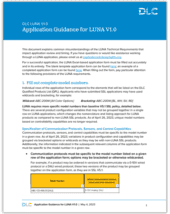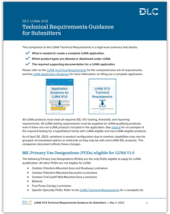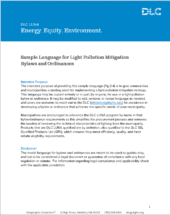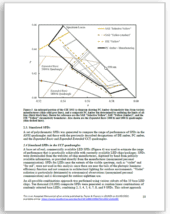This website uses cookies so that we can provide you with the best user experience possible. Cookie information is stored in your browser and performs functions such as recognising you when you return to our website and helping our team to understand which sections of the website you find most interesting and useful.
LUNA

Executive Summary: Choosing Both Energy Efficiency and Light Pollution Mitigation for Commercial Outdoor Lighting
There is a perception that, in a commercial retrofit setting, light pollution mitigating LEDs are less efficient and more costly than energy efficient LEDs, but in some cases you can have the best of both worlds. The DLC commissioned a study to research the impacts of LED applications that are both energy efficient and minimize light pollution as compared with products focused solely on energy efficiency. This executive summary provides an overview of the results of the research.
Key Takeaways
- An overview of how utilities can help municipalities achieve their energy efficiency and decarbonization targets while protecting ecosystems and preserving the night sky for future generations.

Choosing Both Energy Efficiency and Light Pollution Mitigation for Commercial Outdoor Lighting
There is a perception that, in a commercial retrofit setting, light pollution mitigating LEDs are less efficient and more costly than energy efficient LEDs, but in some cases you can have the best of both worlds. The DLC commissioned a study to research the impacts of LED applications that are both energy efficient and minimize light pollution as compared with products focused solely on energy efficiency. The study includes analysis of the impact on ROI, annual energy use, and energy costs.
Key Takeaways
- Learn how utilities can help municipalities achieve their energy efficiency and decarbonization targets while protecting ecosystems and preserving the night sky for future generations.
- Discover how municipalities can meet their energy goals while reducing the harm caused by excessive outdoor lighting.
- Learn new ways to calculate ROI for responsible outdoor lighting.

Application Guidance for LUNA V1.0
This resource explains common misunderstandings of the LUNA Technical Requirements that impact application review and timing and provides information about specific items to pay particular attention to on the application form.
Key Takeaways
- Detailed information on how to ensure a complete LUNA application.

LUNA V1.0 Technical Requirements Guidance for Submitters
This companion to the LUNA V1.0 Technical Requirements provides a high-level summary of the key LUNA requirements that differ from the SSL V5.1 requirements.
Key Takeaways
- Summary of information needed to create a complete LUNA application.
- Eligible and non-eligible product types under LUNA.
- Required supporting documentation for LUNA applications.

Sample Language for Light Pollution Mitigation Bylaws and Ordinances
Outdoor lighting ordinances, bylaws, and other community policies can help mitigate light pollution and negative impacts on wildlife, address light and energy equity issues, and provide guidance to help select products that meet the community’s needs. Written policies that specify what type of light is acceptable during nighttime hours clarifies expectations for product selection and verification. This resource was created by the DLC to provide sample language that can be used by communities as a starting point in creating their own light pollution bylaws or ordinances, and modified to meet the specific needs of the community or municipality.
In this Resource
- Provides generic language that can be included in written policies that specify what type of light is acceptable during nighttime hours clarifies expectations for product selection and verification.

Journal Article: Specifying non-white light sources in outdoor applications to reduce light pollution
This journal article, originally published in Leukos on January 5, 2023, proposes a specification structure for amber light sources to increase the precision of language used in the industry, and encourages lighting standards development organizations to consider standardizing such a system. It also demonstrates that non-white light sources with well-defined chromaticity ranges outside of the ANSI C78.377-2017 quadrangles may be useful for reducing wasted light that causes sky glow, a phenomenon that is associated with approximately $7 billion in wasted energy and nearly 66 million metric tons of CO2 emissions annually.
Key Takeaways
- A call for the lighting industry to consider developing industry consensus definitions and standards for “amber" light sources.
- Methodology for expanding ANSI standard CCT chromaticity bins to include three new bins: 1800K, 2000K, and PC Amber.
- Discussion of why CCT alone is not an adequate representation of the spectral composition of light, and the wide range of potential impacts to sky glow.
Still need help?
© 2023 DesignLights Consortium. The DesignLights Consortium is a project of Efficiency Forward, Inc., a non-profit 501(c)3 organization. Privacy Policy Terms of Use


